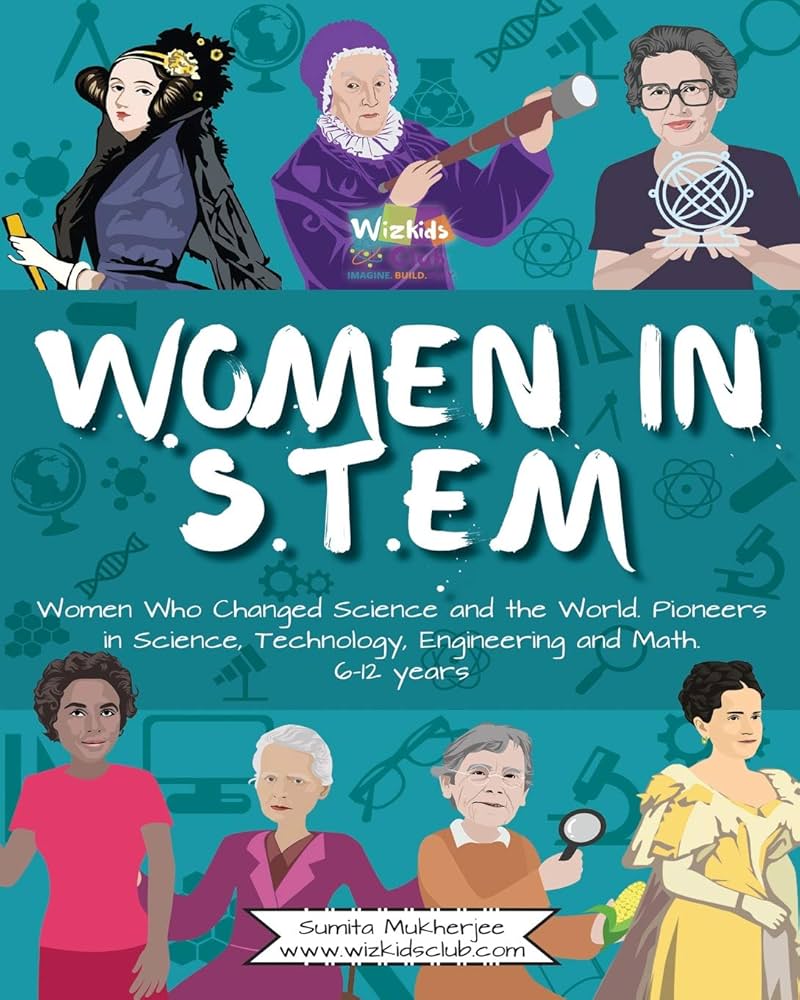Introduction
Sumita Mukherjee’s Women in STEM delves into the challenges and achievements of women in science, technology, engineering, and mathematics. This book uncovers the gender disparities in STEM while celebrating the groundbreaking contributions of women who have overcome significant barriers. Combining historical context, personal narratives, and actionable insights, Mukherjee’s work is a must-read for anyone passionate about gender equity and inclusivity in STEM.
Why This Book Matters
Women in STEM critically examines the historical, cultural, and institutional barriers that have hindered women’s participation in these fields. Mukherjee not only highlights these challenges but also celebrates the accomplishments of female trailblazers and provides strategies for fostering more inclusive STEM environments. This book is essential for educators, policymakers, and professionals committed to advancing gender equity in STEM.
Overview of the Book
Sumita Mukherjee explores key themes, including:
- Historical Context: The often-overlooked contributions of women in STEM throughout history.
- Barriers to Access: Systemic and cultural factors that deter women from pursuing STEM careers.
- Female Trailblazers: Inspiring stories of women who have made monumental contributions to STEM.
- Practical Solutions: Strategies to empower women and girls to thrive in STEM fields.
Intended Audience
This book is ideal for:
- Students and Aspiring STEM Professionals: Especially young women seeking to enter STEM fields.
- Educators and Mentors: Those looking to support and guide women in STEM education and careers.
- Policymakers and Institutions: Individuals working to improve gender diversity in STEM industries.
- STEM Enthusiasts: Readers interested in the history and future of women in STEM.
Key Themes and Insights
- Historical Struggles and Achievements: How women have shaped STEM despite systemic barriers.
- Barriers to Inclusion: Cultural, educational, and workplace challenges women face in STEM.
- Empowerment and Representation: The importance of role models and mentorship in inspiring future generations.
- Educational Reform: Strategies to create inclusive environments that encourage women to pursue STEM.
Real-World Examples
The book highlights inspiring women, including:
- Marie Curie: The first woman to win a Nobel Prize and a pioneer in physics and chemistry.
- Ada Lovelace: The world’s first computer programmer.
- Modern Innovators: Women leading advancements in AI, space exploration, and renewable energy.
Actionable Lessons and Strategies
- Increase Access to STEM Education: Expanding mentorship and support systems for women.
- Promote Female Role Models: Highlighting successful women in STEM to inspire young girls.
- Workplace Reforms: Advocating for equitable hiring practices and supportive policies.
- Encourage Networking: Building communities to foster collaboration and professional growth.
Criticisms and Limitations
- Focus on Western Perspectives: The book primarily addresses Western STEM cultures, which may not fully reflect global experiences.
- Limited Intersectionality: A deeper exploration of how race, class, and gender intersect in STEM could enhance the discussion.
- Need for Detailed Solutions: Some readers may seek more concrete strategies for addressing systemic barriers.
Modern Relevance
As the demand for STEM professionals grows, the need for gender diversity in these fields is more urgent than ever. Women in STEM provides timely insights into the challenges women face and offers solutions to close the gender gap, making it a vital resource for fostering inclusivity in science and technology.
About the Author: Sumita Mukherjee
Sumita Mukherjee is a leading advocate for gender equality in STEM. Her research focuses on the historical and social barriers women face in science and technology, as well as strategies to overcome them. Through her work, she aims to empower the next generation of women in STEM and promote a more inclusive scientific community.
Conclusion
Sumita Mukherjee’s Women in STEM is a powerful exploration of the challenges and opportunities for women in science, technology, engineering, and mathematics. By blending historical context with practical solutions, Mukherjee inspires readers to contribute to the fight for gender equity in STEM. This book is an essential read for anyone committed to creating a future where women thrive in STEM professions.
